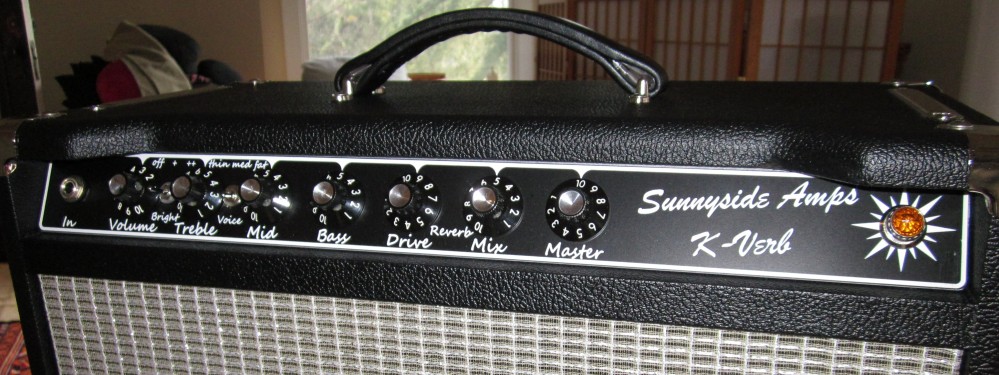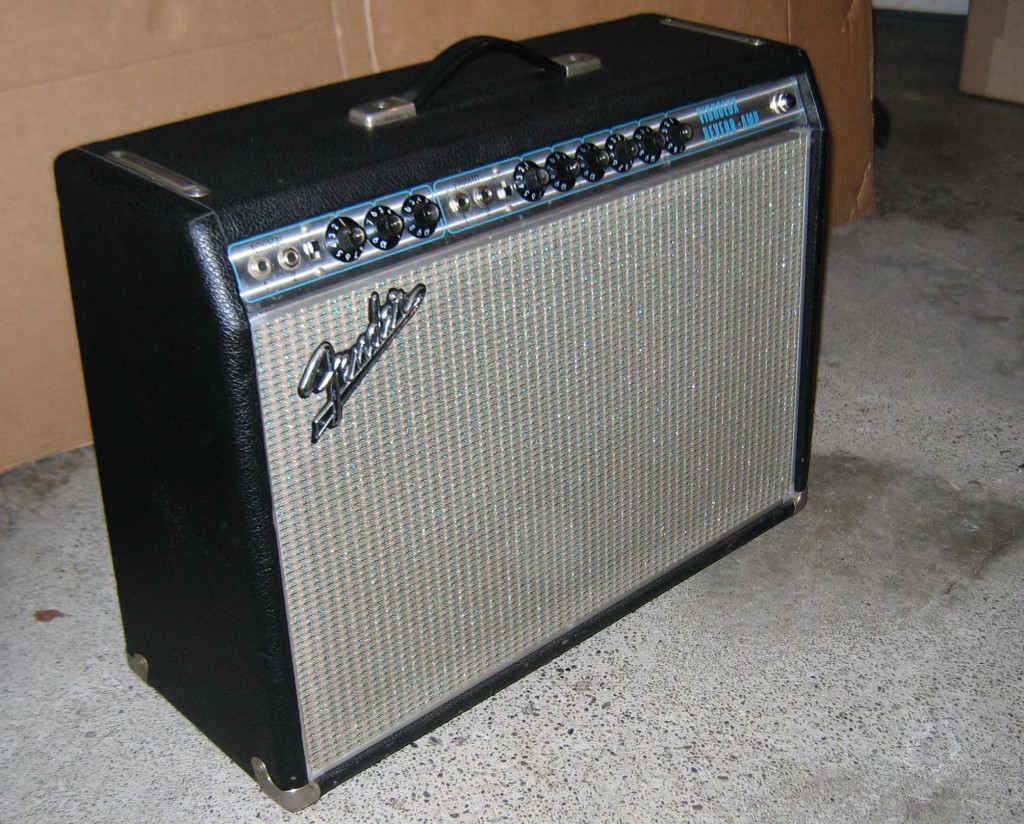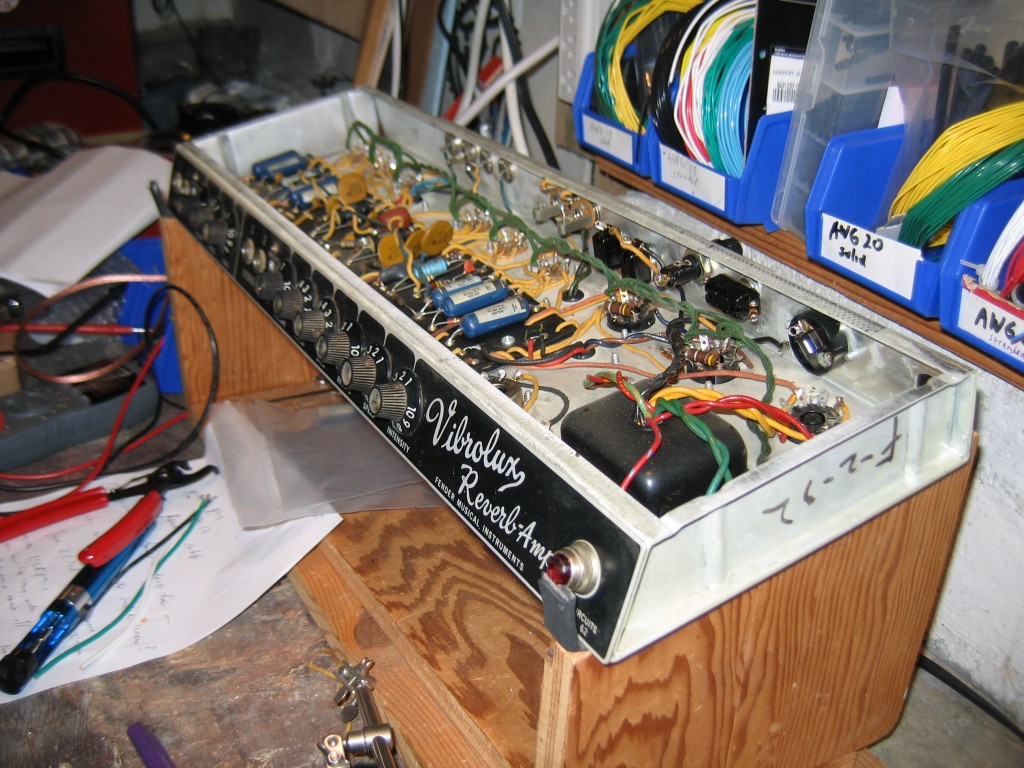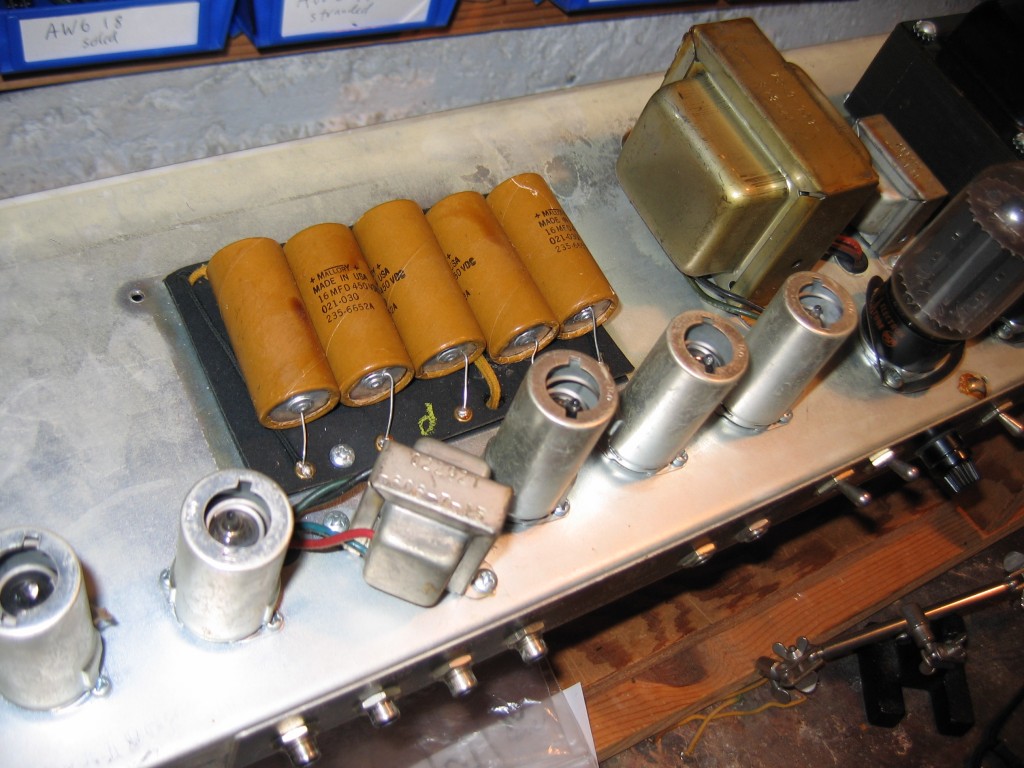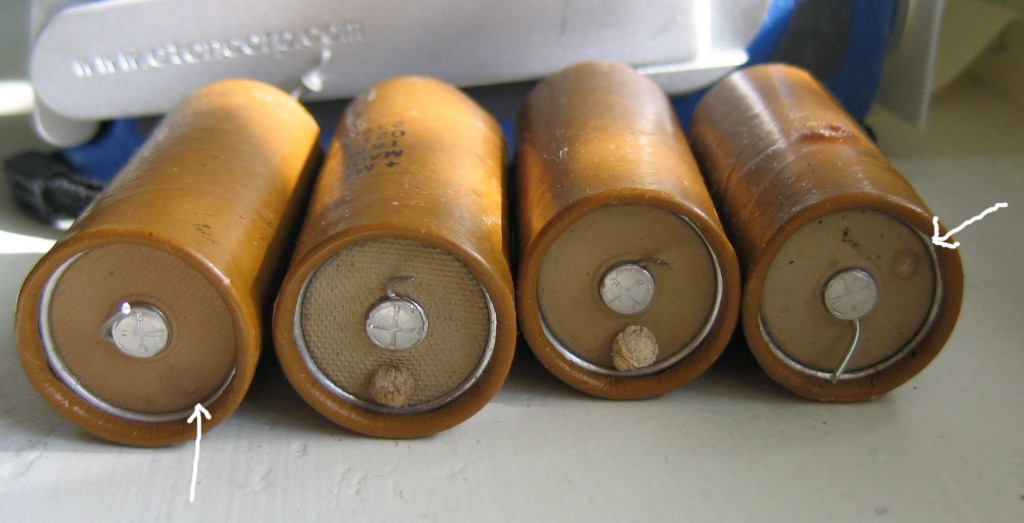Hmm..June must be Vibrolux Reverb month here at Sunnyside!
This one: a 1969 Silverface. The owner brought it in due to an annoying “ticking” sound due to the vibrato (actually tremelo) circuit. Most Blackface and Silverface Fenders with the LDR (light dependent resistor) tremelo circuit have this problem to some degree.
Ever held an analog (battery powered) wristwatch near your guitar pickups (with guitar plugged into amp, and amp turned on)? Same thing happens more or less. The clock signal is feeding into the analog signal chain.
The tremelo (inthis type of Fender amplifier) uses an oscillator, in conjuction with the LDR, to create the pulsing volume effect. The problem is that the oscillator and LDR signals can couple into the rest of the circuitry. I have seen this so many times. But there are remedies….
This one is a whole lot quieter now!
